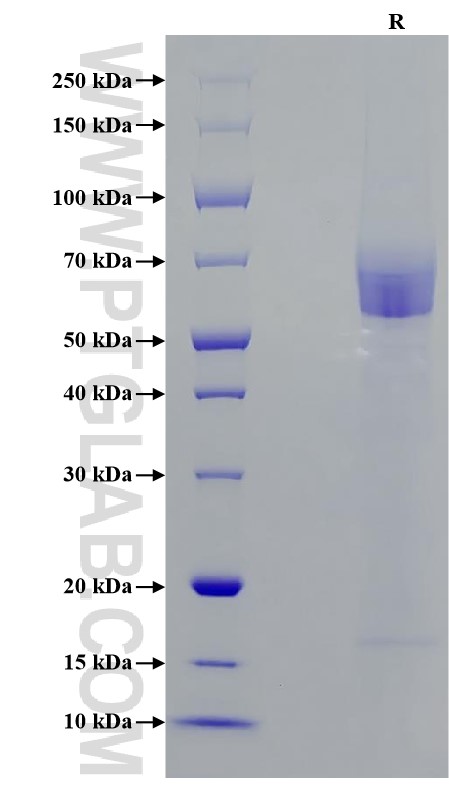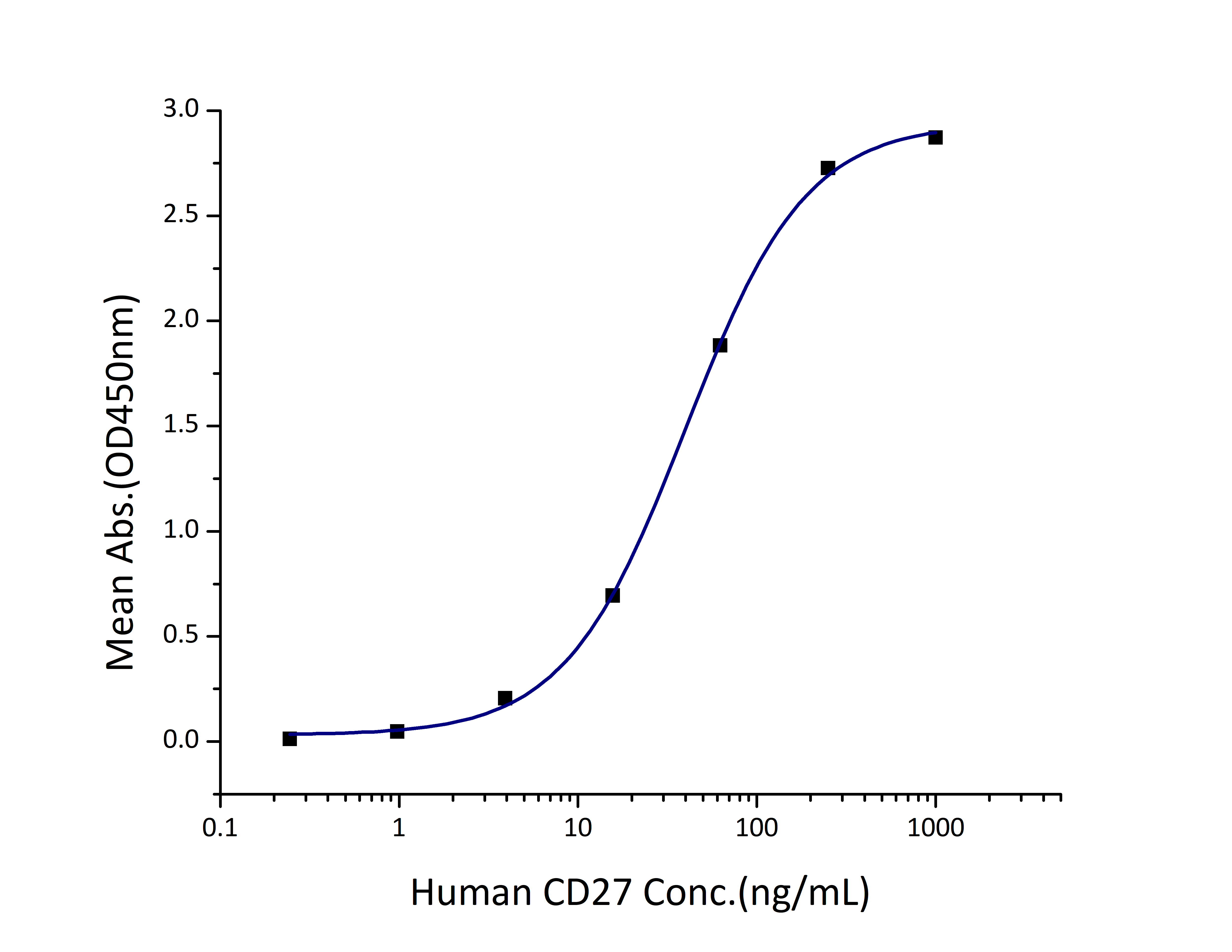Recombinant Human CD27 protein (hFc Tag, Myc Tag, His Tag)
种属
Human
纯度
>90 %, SDS-PAGE
标签
hFc Tag, Myc Tag, His Tag
生物活性
EC50: 20-80 ng/mL
验证数据展示
产品信息
| 纯度 | >90 %, SDS-PAGE |
| 内毒素 | <0.1 EU/μg protein, LAL method |
| 生物活性 |
Immobilized Human CD70 (His tag) at 2 μg/mL (100 μL/well) can bind Human CD27 (hFc tag, Myc tag, His tag) with a linear range of 20-80 ng/mL. |
| 来源 | HEK293-derived Human CD27 protein Ala20-Arg191 (Accession# P26842) with a human IgG1 Fc tag, a Myc tag and a His tag at the C-terminus. |
| 基因ID | 939 |
| 蛋白编号 | P26842 |
| 预测分子量 | 47.7 kDa |
| SDS-PAGE | 58-70 kDa, reducing (R) conditions |
| 组分 | Lyophilized from 0.22 μm filtered solution in PBS, pH 7.4. Normally 5% trehalose and 5% mannitol are added as protectants before lyophilization. |
| 复溶 | Briefly centrifuge the tube before opening. Reconstitute at 0.1-0.5 mg/mL in sterile water. |
| 储存条件 |
It is recommended that the protein be aliquoted for optimal storage. Avoid repeated freeze-thaw cycles.
|
| 运输条件 | The product is shipped at ambient temperature. Upon receipt, store it immediately at the recommended temperature. |
背景信息
CD27 (also known as TNFRSF7) is a type I glycoprotein expressed on some B cells and the majority of T cells, and is a member of the tumor necrosis factor (TNF) receptor family. CD27 is required for generation and long-term maintenance of T cell immunity. It is a receptor for CD70 (CD27L). Ligation of CD27 by CD70 induces strong ubiquitination of TRAF and the activation of both canonical and non-canonical NF-kappaB pathways, as well as the JNK pathway. CD27 may also play a role in apoptosis through association with SIVA1.
参考文献:
1. K V Prasad, et al. (1997) Proc Natl Acad Sci U S A. 94(12):6346-51. 2. J Hendriks, et al. (2000) Nat Immunol. 1(5):433-40. 3. Martijn A Nolte, et al. (2009) Immunol Rev. 229(1):216-31.



